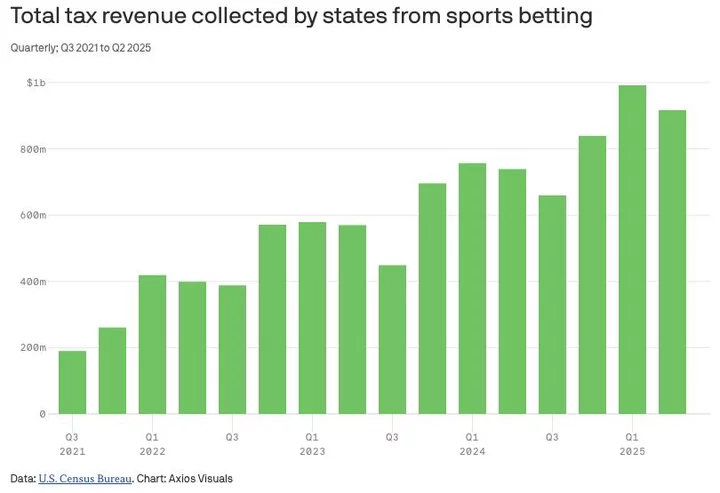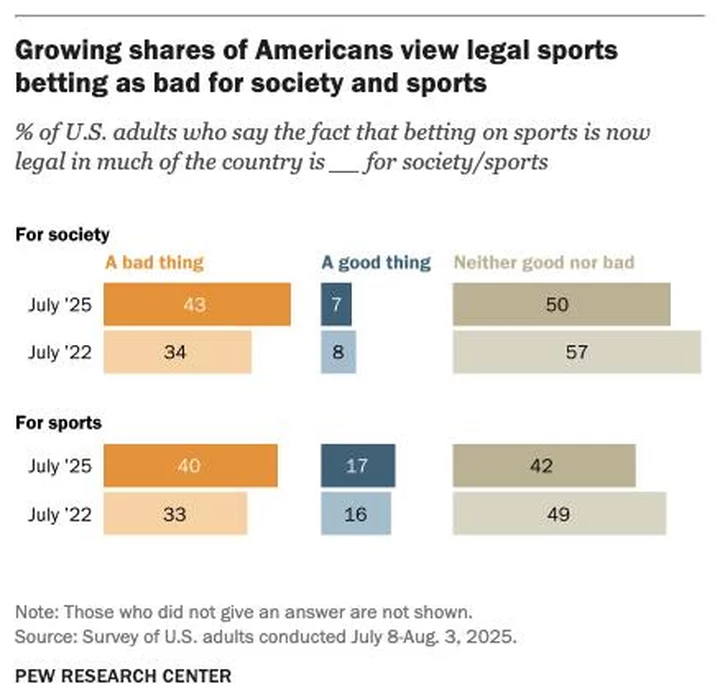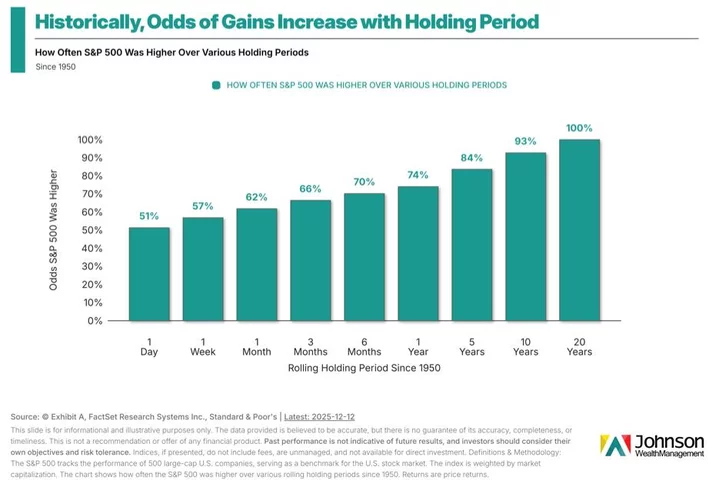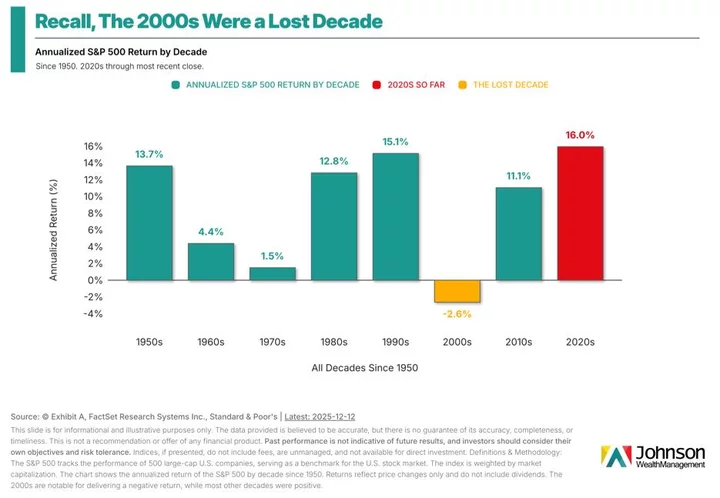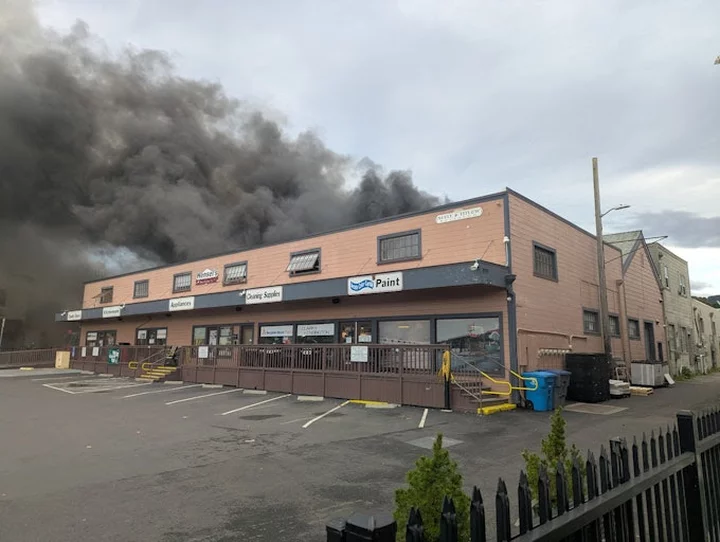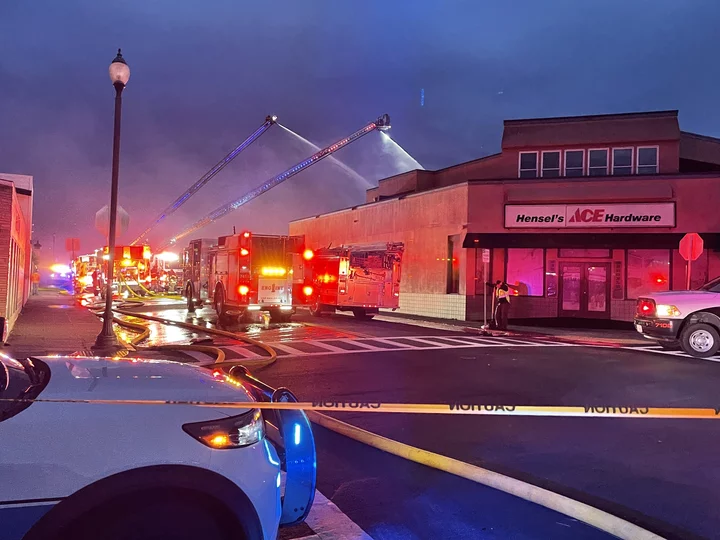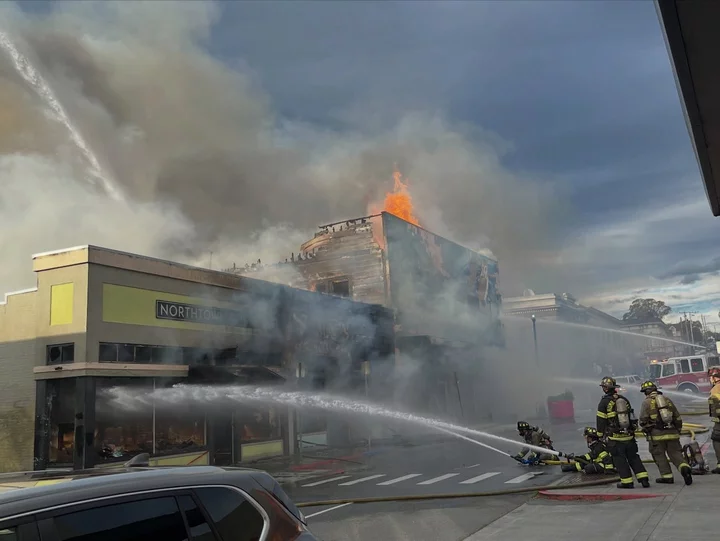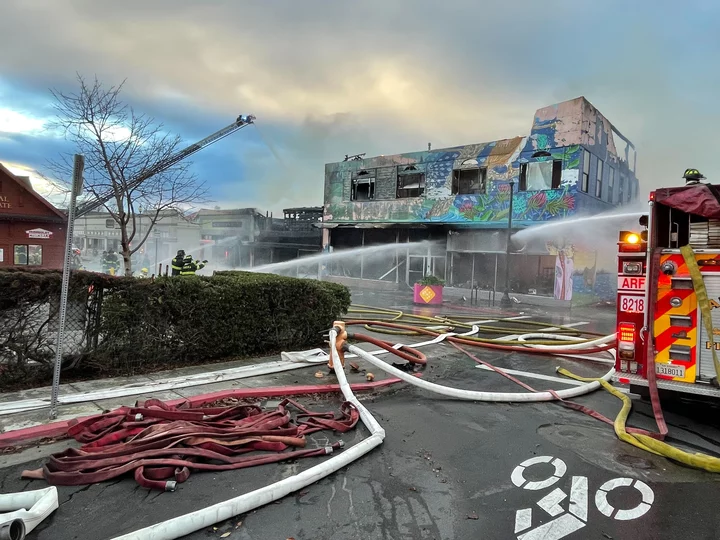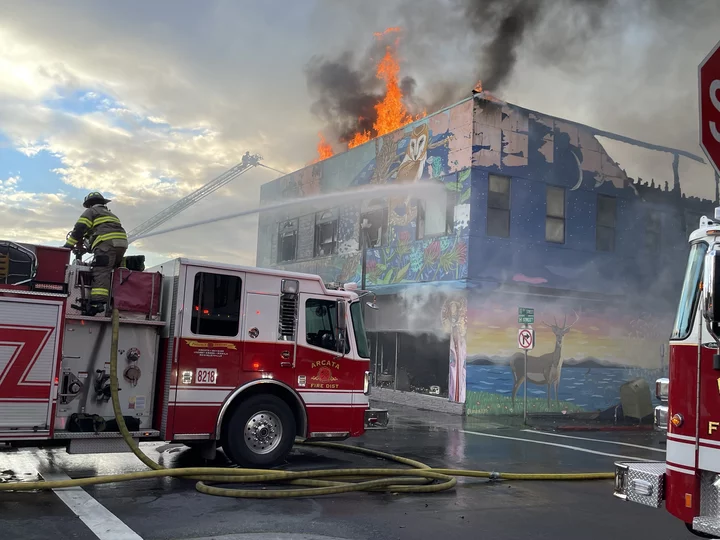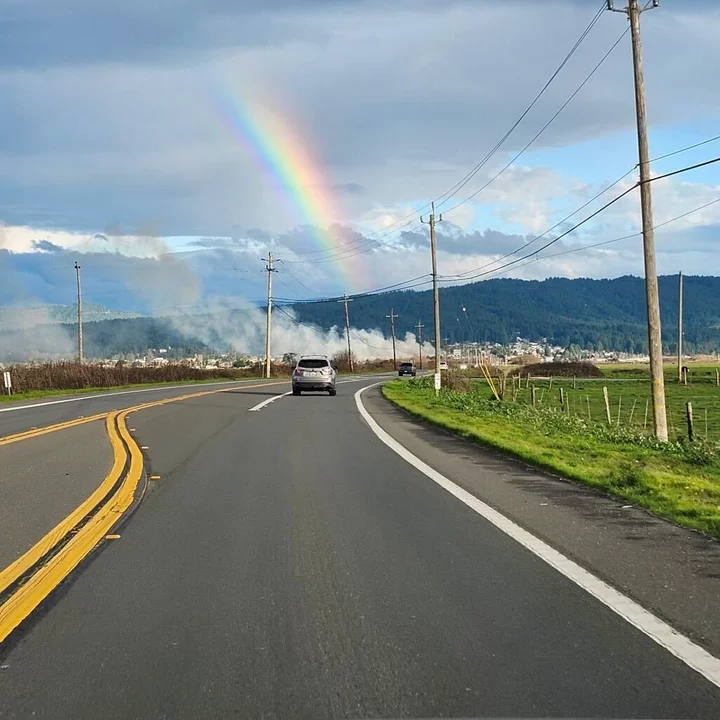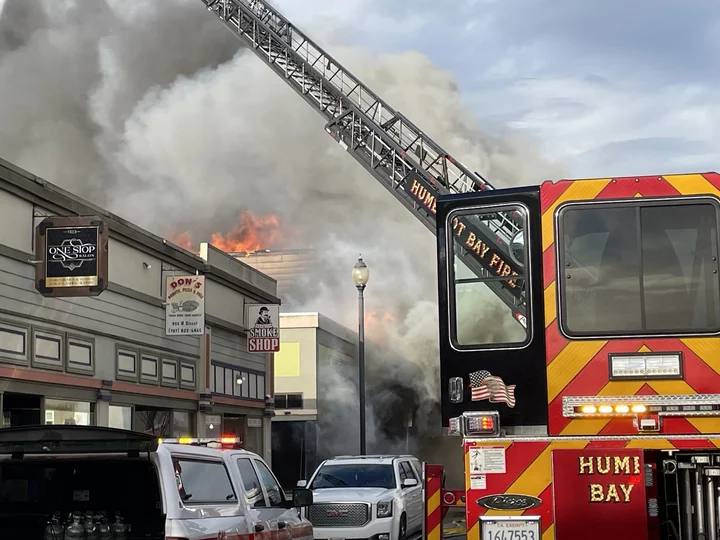TO YOUR WEALTH: Invest Like a Gardener, Not a Gambler
Brandon Stockman / Sunday, Jan. 4 @ 7:05 a.m. / Money
Gambling is big business in the land of the free and the home of the brave.
Even the government is reaping growing revenues from gambling.
According to the U.S. Census Bureau, sports betting tax revenue was near $200 million midway through 2021. Four years later it’s around $1 billion.1
Consequently, it’s not just sports betting that is on the rise. You can now put money on politics, policies, and cultural moments like who will win Best Picture or how many times Elon Musk will tweet via Polymarket.
All this legal wagering is becoming a problem for some. Though not all gamblers are addicts, some are enslaved to it. The National Problem Gambling Helpline has spiked in comparison to where it was just a few years ago2, and more and more Americans view it as a growing problem and bad for society.3
Economist Kyla Scanlon believes that gambling is not simply something that people do at casinos or on phone apps. The entire economy is now a casino. She identifies “gambling throughout the economy — in markets, policy and how we talk about the future”.4 She points to things like cryptocurrency, memecoins, tariff political theatre, and big bets by tech companies on AI to justify her claim.
I don’t think it’s just the thrill gambling offers the consumer and the increasing ways to scratch that itch that are contributing to the effect of widespread betting on a society. It may also be driven by a seductive neurotransmitter: dopamine.
Let’s be honest, even if you aren’t high on gambling, you may be drunk on dopamine.
One writer, who served on the faculty of Stanford, compares the differences between slow traditional culture, fast modern culture, and dopamine culture — of which gambling is a part — along with their impacts on anything from athletics to relationships.5
As a financial advisor and one who spends time thinking and talking to people about their finances and how to build wealth, I could add a whole row on this kind of culture’s impact on investing:
- SLOW TRADITIONAL CULTURE: Read about financial markets in a newspaper the day after the news happened or watch it on the 6 o’clock news.
- MODERN CULTURE: Watch it 24/7 on CNBC from market experts and call your stockbroker.
- DOPAMINE CULTURE: Watch it, read it, click it, swipe it from a TikTok, Instagram Reel, Facebook post, or YouTube video from people creating financial media who might have an MBA from a reputable university or who might live in their mom’s basement straight out of high school. A constant stream of amateurs and experts on finance from any algorithm that fits your political, religious, and cultural tastes is at your fingertips. Pull up your trading app that lets you buy/sell at the push of a screen or swipe of a finger, as if you are playing a video game.
Dopamine investors make financial decisions based on the immediate present. An investment decision about your financial future is reduced to a swipe. Don’t think first and act later. Feel first and act immediately.
In the investing world, day-traders get this chemical rush often. One writer for Morningstar, a global investment research firm, put it this way:
On a neurochemical level gambling, day trading and speculation are not very different. Behavioural economist Sarah Newcomb says “there are certainly legitimate reasons for the occasional trade. Some trading is the result of long-term planning and the execution of a solid strategy. However, repeated studies, including Morningstar’s annual Mind the Gap report, demonstrate that investors who actively trade tend to underperform the market.”6
Long-term investors, on the other hand, will need durability over dopamine. They have more in common with gardening than gambling.
Resilience and durability are something that our culture could use a bit more of.
I’m not naive. I know that investing in the stock market has often been compared to gambling.
That critique is not always valid, though.
While investing in the stock market for a day compares to a coin flip, investing in it for decades increases to high probabilities of success. In fact, the S&P 500 (America’s largest publicly traded companies) has been 100% positive across every 20-year period since 1950.
This is not to say that investors will not experience large drawdowns. They most certainly will.
Investors in the 2000s lost an entire decade.
Durability matters.
If you had put $10,000 at the beginning in 1999 in the S&P 500 index — enduring events like the tech bubble popping to 9/11 to the Financial Crisis to the COVID crisis — that would have increased nearly ninefold, totaling around $90,000.
How do you become a durable investor in a dopamine culture?
You may want to consider fasting.
Dr. Anna Lembke, author of Dopamine Nation: Finding Balance in the Age of Indulgence, gave an interview where she described what this kind of fast looks like:
The intervention is basically, very simplified, and threefold.
1. Abstaining for a period of time from our drug of choice.
2. Learning to sit with discomfort, which is, of course, something that many different traditions teach.
3. Intentionally doing things that are painful: things that are physically hard and mentally hard.7
Nothing sells nowadays like abstinence, discomfort, and hard things.
But durable investors will need to abstain from the constant drama coming through their devices. They need to learn to sit with the discomfort of portfolio drawdowns and the constant hum of negative what-if scenarios from financial media. They will need to do hard things like cutting back on spending, paying off debt, adding to savings, and investing based on their future desires, not only their present ones.
Durability may not be pleasurable in the moment. It may force you to say “No” to reactive, impulse-driven investment decisions, but it just might lead to long-term rewards.
Invest like a gardener who is focused on a harvest that comes through all kinds of seasons, not a gambler trying to get rich quick.
You might get “lucky” gambling, but it won’t make you wise.
###
Sources:
1. Chart from Axios article “The high cost of the U.S. sports betting boom” published by Erica Pandey on December 14, 2025.
2. See Axios article above.
3. Chart taken from Pew Research Center published on October 2, 2025.
4. NY Times, “It is Trump’s Casino Economy Now. You’ll Probably Lose.” Published on October 16, 2025.
5. Ted Gioia, “The State of the Culture, 2024” published February 18, 2024.
6. Jessica Bebel, “Dopamine Rushes: is Day Trading as Addictive as Gambling?” published November 23, 2023.
7. Mary Beth Maslowski interview with Dr. Anna Lembke on Psychiatry Advisor on February 24, 2023: “Interview with the Author of *Dopamine Nation: Finding Balance in the Age of Indulgence”.
# # #
Brandon Stockman has been a Wealth Advisor licensed with the Series 7 and 66 since the Great Financial Crisis of 2008. He has the privilege of helping manage accounts throughout the United States and works in the Fortuna office of Johnson Wealth Management. You can sign up for his weekly newsletter on investing and financial education or subscribe to his YouTube channel. Securities and advisory services offered through Prospera Financial Services, Inc. | Member FINRA, SIPC. This should not be considered tax, legal, or investment advice. Past performance is no guarantee of future results.
BOOKED
Today: 9 felonies, 6 misdemeanors, 0 infractions
JUDGED
Humboldt County Superior Court Calendar: Today
CHP REPORTS
No current incidents
ELSEWHERE
Governor’s Office: One year after LA fires: California deploys firefighting resources and advanced technology, accelerates prevention efforts
Governor’s Office: Governor Newsom statement on the passing of Congressman Doug LaMalfa
RHBB: Naloxone Distribution Boxes Installed in Weaverville to Expand Overdose Prevention
Arcata Fire: Cause of Friday’s Block-Destroying Blaze Still Under Investigation; Seven Businesses Leveled, Along With Several Apartments; Five Other Businesses Sustained Damage
LoCO Staff / Saturday, Jan. 3 @ 12:15 p.m. / Emergencies
The I Street Side during the fire yesterday. Photo: AFD.
###
PREVIOUSLY:
###
Press release from the Arcata Fire District:
On January 2, 2026, at approximately 2:30 p.m., while returning from a previous medical call, an Arcata Fire District engine company assigned to the downtown station observed a large amount of smoke coming from the downtown commercial district. The engine captain immediately requested a full commercial fire response and proceeded toward the source of the smoke.
The engine company arrived moments later in the 800 block of 10th Street and encountered a well-established, rapidly spreading fire in a large, two-story commercial structure with apartments above and businesses below. The fire had already spread laterally to multiple occupancies through concealed spaces within the interconnected structures.
As additional Arcata Fire District resources arrived, an offensive fire suppression strategy was implemented. Fire personnel prioritized the immediate evacuation of apartment residents while simultaneously attempting to gain control of the fire. Strong winds significantly accelerated fire growth through the older buildings. During operations, a natural gas manifold serving the structures was damaged, and firefighters were unable to shut down the gas supply. Pacific Gas and Electric (PG&E) was requested. Due to the proximity of the fire, PG&E crews were required to excavate at the intersection of 10th and H Streets and crimp the gas line to safely shut off service to the affected structures.
Multiple fire engines, ladder trucks, recalled off-duty personnel, and chief officers from agencies throughout Humboldt County were requested through the county mutual aid system. As additional resources arrived, command determined they would be deployed to prevent fire spread to surrounding city blocks, including the historic Minor Theater, which was experiencing direct heat, ember exposure, and smoke impingement due to strong southerly winds. Crews were assigned to rooftops in downwind areas to extinguish embers and suppress spot fires as they ignited.
As interior firefighting operations continued, conditions deteriorated and it became evident that the fire posed a significant life safety threat to personnel. Due to structural instability and collapse occurring in multiple locations, the decision was made to evacuate firefighters from the involved structures.
Fire apparatus were repositioned and defensive operations continued for several hours. Power and gas service to several downtown businesses were shut off to ensure operational safety. City of Arcata staff were requested to increase water flow to hydrants in the area, as master streams were placing heavy demand on the water system. As sections of the buildings collapsed into the street, two excavators were requested to open portions of the structures, allowing water streams to reach areas of free-burning fire.
As firefighters gained control of the incident, the American Red Cross responded to assist with the temporary housing needs of displaced apartment residents. There were no reported injuries to civilians or firefighters.
The cause of the fire remains under investigation. The Arcata Fire District is working in coordination with the Humboldt County Fire-Arson Investigation Team. Anyone with information related to this fire is encouraged to contact the Arcata Fire District at (707) 825-2000.
Fire suppression resources responded from as far away as Weott in Southern Humboldt. Participating agencies included Arcata Fire District, Humboldt Bay Fire, Samoa Fire, Kneeland Fire, Westhaven Fire, Loleta Fire, Ferndale Fire, Fortuna Fire, Fieldbrook Fire, Blue Lake Fire, Rio Dell Fire, Arcata-Mad River Ambulance, CAL FIRE Trinidad, and CAL FIRE Weott. Every ladder truck in Humboldt County was deployed to this incident. Approximately 80 fire suppression personnel and an additional 20 support personnel were involved. Without the mutual aid support of our partner agencies, this fire could have spread across several city blocks and resulted in significant injuries and loss of life.
The Arcata Fire District also extends its appreciation to the City of Arcata Engineering, Building, Public Works, and Water Departments; Arcata Police Department; Arcata Fire District Volunteer Logistics Unit; Cal Poly Humboldt University Police Department; California Department of Fish and Wildlife; California Highway Patrol; Humboldt County Sheriff’s Office; Humboldt County District Attorney’s Office; Humboldt County Environmental Health Department; and the Humboldt County Chapter of the American Red Cross for providing traffic control, logistical support, and technical expertise throughout the incident.
Additionally, the Arcata Fire District thanks the citizens of Arcata for their assistance and continued support of the impacted business owners and residents. We recognize the profound impact this incident has had on lives and livelihoods, and we encourage the community to continue showing compassion and kindness toward those affected. Preliminary damage assessments indicate that seven businesses, including associated apartments, were destroyed, and at least five additional businesses sustained heat, smoke, or water damage. Initial loss estimates are approximately $18 million; however, this figure may change as assessments continue.
The Arcata Fire District will release additional information as it becomes available.
Roughly the same angle today. Photo: Greg King.
Trinidad Without Water After Big Main Break on Scenic Drive Empties the City’s Tanks
LoCO Staff / Saturday, Jan. 3 @ 10:15 a.m. / Emergencies
Outpost Trinidad Bureau Chief Ted Pease tells us that the town is without water this morning. He says:
Crews are on the job at the break on Scenic, described as a “big blowout” in the middle of the night that emptied the two big (250,000 gallons?) supply tanks quickly. No word on how long repairs and refilling the tanks will take. Tankers are now transporting water to start refilling them while repairs to the line are underway.
In the meantime, even if you still have water at your house, the city requests that you do not run the water and conserve as much as possible so as not to empty the system. If you do still have water, it is simply coming to you by gravity feed, and will run out eventually. Caution is needed when the system is restarted if pipes are empty to prevent excess pressure on restart from blowing out pipes. So please conserve: no showers, washers, flushing, etc., until further notice.
The city is updating residents at this link. Seems like a repeat of the situation two years ago.
HUMBOLDT HISTORY: I Was Waylaid by 500 Razorback Hogs on the Road to Hoopa
Harvey B. Hemphill / Saturday, Jan. 3 @ 7:30 a.m. / History
“Hog Drovers.” Harper’s New Monthly Magazine, October 1857. Public domain.
###
The year was 1905, the fifteenth year of my life. I had just finished grammar school in Blue Lake, Humboldt County, California, and was looking for work whereby I might earn money to attend Eureka Business College. Tuition in that institution was $120.00 on time, or $85.00 cash, for an eleven months course. Many of you old timers will probably remember C. J. Craddock, Professor Glenn, the mathematics teacher, and Miss Mae Smith, the shorthand and typing instructor.
My uncle, Jack A. MacPherson, owned a livery stable in Blue Lake, with about every conceivable horse-drawn vehicle — surreys-with-the-fringe-on-top, rubber-tired buggies, with and without tops, two to six seated stages, a mail stage, the town hearse, and 27 horses. He employed two men in the stables, one of whom slept in the barn at night to receive any transient business or rigs returning during the night. These men were Danny McCann and Vic Jensen.
There were many traveling men in those days, called “Drummers” who needed rigs to transport them and their sample cases from store to store, and often they would ask for a driver, as they lacked the time to care for the horse. If it were a trip requiring an overnight stay, my uncle would have to find a driver for the occasion, and he’d called upon me several times for this type of work.
Mr. Ike Denney, the mail stage driver, used to leave Blue Lake for the Hoopa Indian Reservation, 50 miles up the mountains, at 6 o’clock Monday mornings, drive half-way, to the mail station, put up for the night, and travel the balance of the distance on Tuesday, remain over Wednesday to make up the freight and mail, rest the animals for his return trip, then leave Hoopa at 6:00 o’clock Thursday morning, back to the mail station, stay over that night and arrive in Blue Lake Friday evening.
Platt Lupton owned a small homestead about 14 miles up this Hoopa road, and 2-3 miles to the left, off the main road. On this particular Friday, Platt walked out to the main road in time to catch the mail stage on its return trip to Blue Lake. When they reached the stable, Platt told my uncle he had come to town to purchase a good, second-hand buckboard for use around his ranch. “Mac” thought he had just the rig, and they agreed to meet early Saturday morning. Platt then left for the Blue Lake Hotel to spend the night.
He was back at the stable early Saturday morning, and the deal was made, with the understanding that a horse and driver would be furnished to transport the buckboard to Platt’s ranch. He wanted to start home by 2 p.m., Saturday, as he had chores awaiting him on Sunday. He then went down to the saloon for a drink or two before leaving town. “Mac” called me at 1:30 p.m. asking if I’d drive for him, and I was at the stable by 1:45 p.m., and we started preparing for the trip.
We harnessed the horse to the rig, put in a saddle, blankets, bridle, a gunny sack and 4 feet of baling rope, with which to tie the sack of harness for the return. By 2 o’clock. Platt hadn’t shown up. The stablemen went down to see what was causing the delay. Platt was quite drunk and didn’t seem to be in any hurry to start home. The men came back, we unharnessed the horse and put him back in the stall. At 3 o’clock the men went down once more. Platt, by then, did not care whether he ever went home.
“Mac” stated we would wait until 4 p.m. and if he hadn’t shown up by then, they would go down and get him even if be had to be carried.
At 4 o’clock we started to get ready again. “Mac” said: “Now that you are getting such a late start, I am going to give you ‘Silver-mane Fanny’ to drive. She is awfully good in the dark and will automatically yield one-half the road if you should meet anyone.” The men headed for the saloon and practically carried Platt back to the stable. He was placed in the buckboard, feet forward, under the seat, with his bead on the seat of the saddle, padded with blankets to make him comfortable as possible.
Now we were off for his ranch. The hour was 4:30 p.m. Some four miles later we passed the John Anderson sheep ranch, just at the base of the mountain. Here they raised hundreds of head of sheep each year. From this point on I was not too familiar with the road. About 3 and a half miles beyond was a stand of timber, which hadn’t been logged yet, and through which we would have to pass.
As it was a bright, moonlit night. I did not think this would pose any problem, but when we entered the forest it was so dark that I could not see my hands before me. I could hear Fanny’s footsteps on the gravel road, and it was getting pretty lonely. I called down to Platt a couple of times, with no response. He was still dead drunk.
Through the quietness of the timber, it seemed I heard a man’s voice, and as we advanced, step by step, the voice became louder. I saw the light of a lantern and a man on horseback. I could see by his light that I was approximately 4 feet from the bank on the right and about 8 feet to the shoulder of the road on my left. I stopped the wagon, and Mr. Swanson, a hog raiser from Hoopa, rode up beside me.
He said that he had 500 head of razorback hogs for the Bull slaughterhouse in Arcata, and that he had come from the mail station that morning, expecting to reach the Anderson ranch before dark, but that it bad been such a hot day and the hogs were tired, so he bad to travel very slowly. He still had about four miles to go before reaching the Anderson ranch.
He started off down the road, calling to the hogs, and for the next 10 or 15 minutes it was perfect bedlam. There were hogs under the buckboard, and on both sides. I could feel the rig sliding back and forth across the road, and was afraid the wheels would cave in and let us down in the path of the animals. I slid off the seat and down onto my knees, astraddle Platt’s legs, to make us less top-heavy.
At the rear of the drove of pigs were two burly young Indians, each with a straight limb, about 4 feet long, which they used as a sort of cane to urge the slower hogs along. I suppose they had noticed that the drove had been delayed somewhat, and it made them angry, for when they reached us, they cursed us and one of them struck Fanny across the nose with his stick, knocking her down onto her stomach. They went on, leaving us helpless there in the road.
I waited for a time in the seat, thinking my horse might get to her feet. I could hear her struggling to rise, but the wagon shaft made it the more difficult for her. Climbing down the left side of the rig, I went to her head and patted her neck and stroked the swollen nose.
We were on a rather steep grade and I didn’t have anything to block the wheels, had I been able to find a rock or limb in the darkness, and I did not dare free Fanny from the shaft. I took hold of the lines at her head and kept talking soothingly, patting and rubbing her sore nose, and on the third attempt, she managed to struggle to her feet.
We waited a while for her to regain strength, then started on. We were two-thirds through the timber by now. “Mac” had told me that when we emerged from the timber stand, in the moonlight I would see a very large rock to the right, silhouetted against the sky, and that I was to go no further than a quarter mile beyond this rock, where I would see Platt’s mailbox and his private road.
We found the landmarks, and still had two miles to go down Platt’s road, which was much overgrown, and two or three times the overhead branches almost raked me off the wagon seat. We reached our destination in about three-quarters of an hour. I approached his cabin and found the door unlocked, went in and lit the lamp, and then had before me the task of getting him out of the rig and on his feet again. Half-dragging him into the cabin, I dumped him upon the bed, clothes, shoes and all, put out the lamp, closed his door and proceeded to ready myself for the return trip.
I unharnessed Fanny, loaded the harness into the gunny sack, tied it with bailing rope and placed it on the seat of the buckboard. Then, blanketed, saddled and bridled Fanny, mounted the saddle and eased her up to the buckboard from which I pulled the sack of harness over in front of me on the horn of my saddle. Feeling much relieved that this task was accomplished, I started homeward.
It was much easier traveling on horseback than with the rig. I had passed through the timber stand and out into the moonlight again, when suddenly, a panther cried within about 12 feet of the road. Fanny almost jumped from under me. In my efforts to hold my position on her back, the sack of harness fell to the ground and Fanny dashed down the road as fast as she could travel.
I allowed her to run for about a quarter of a mile, then reined her in and tried to quiet her as best I could. I hesitated for some time, thinking maybe to leave the sack of harness in the road and return for it in the morning. Then, since it was a brand new harness, costing $25, a lot of money in those days, and just might jeopardize my chances of getting more driving to do should I abandon it, decided to go back for it.
Fanny was not too cooperative. She snorted and pranced about in circles. After considerable coaxing and persuasion, I managed to get her started back up the road. I knew there would be no trouble in finding the big sack, she would let me know when we approached it. Sure enough, she walked within 60 feet of the “bulk” and would go no closer.
By moonlight I could see the object in the middle of the road, but could not distinguish whether it was the sack of harness or the panther crouched there. I watched it for several minutes, while my horse pranced and wheeled around in the road, and, seeing no movement, started my approach.
I dismounted, taking the reins down over Fanny’s head, putting my right arm through them to the elbow, so that if the panther should cry out again, my horse would not get away from me. We started toward the bulky object very slowly. The closer we came, the more convinced I was that it was the sack of harness. I walked up to it and retrieved it with both ends of the baling rope, leaving a loop in the middle, by which to lift it over the saddle horn, remounted, and pulled the sack up before me. Once more we started for home.
As we passed the Anderson ranch I could see the hogs in his corral. From then on I really enjoyed the ride in the moonlight, arriving at the stable approximately 2 a.m. Sunday.
When the night man learned of my trials and saw poor Fanny’s swollen nose, he was pretty much disturbed and said we would demand an apology from the Indians when they came through town; but they did not come. Mr. Swanson took the Scottsville road, skirting the town. I suppose he thought they would have less trouble going that way, as there were no intersections and most of the homes had front-yard fences.
We did not see the Indians on their way to Arcata nor on the return to Hoopa, and we never did get an apology from them.
###
The piece above was printed in the May-June 1970 issue of the Humboldt Historian, a journal of the Humboldt County Historical Society. It is reprinted here with permission. The Humboldt County Historical Society is a nonprofit organization devoted to archiving, preserving and sharing Humboldt County’s rich history. You can become a member and receive a year’s worth of new issues of The Humboldt Historian at this link.
(UPDATING) Huge Fire in Downtown Arcata
LoCO Staff / Friday, Jan. 2 @ 3 p.m. / Fire
UPDATE, 5:46 p.m.: The Sun Sets on Northtown Books
Here was the scene on H Street as the sun set.
This is an unimaginable loss to the community. All these businesses were cool. Dandar’s was just getting going, and it already had young, hardcore fans.
But Northtown Books, especially, has stood in that spot since before I moved to town, nearly 40 years ago. It was an immensely important cultural institution in the city and the county. I don’t know how it can be replaced.
I do know I speak for a whole lot of people when I say that tonight my thoughts are with Dante, Monica, Jay, Jon and everyone else who made it what it was. Thank you so much for your devotion to that store.
— Hank Sims
###
UPDATE, 5:28 p.m.:
It’s hard to tell exactly what’s happening on the I Street side of the fire, but this photo — just snapped — would seem to indicate that the Hensel’s Hardware main building, at least, may have made it through. The paint store, the kitchen store and the candy store are not likely to have been as lucky.
— Hank Sims
###
UPDATE, 5:15 p.m.: Buildings Coming Down
Emergency personnel have a backhoe on scene and are starting to bring down buildings.
— Hank Sims
###
###
UPDATE, 4:36 p.m.: No Known Injuries; Cause of Fire Still a Mystery
Photo: Burns.
Dave White of Arcata Fire just spoke to the Outpost’s Ryan Burns and other reporters on scene. Some key points:
- Firefighters are still uncertain what caused the blaze.
- There are no known injuries associated with the fire, either among civilians or emergency personnel.
- Firefighters expect to be actively, “defensively” fighting the fire into the night. There are still interior parts of the fire that they can’t reach.
White said the fire was originally spotted by one of the department’s own engines, which happened to be passing by.
Here’s audio of their conversation, which is pretty hard to make out due to the nearby jackhammering:
— Hank Sims
###
UPDATE, 4:19 p.m.:
###
“They are still hitting the fire from all sides and from above,” says our reporter. “Northtown and Dandar’s look like a total loss. A PG&E sledgehammer on treads is here digging into the asphalt.”
— Hank Sims
###
###
UPDATE, 3:48 p.m.:
Photo: Kyrs McKasson
Burns says “They’re hitting it with everything they’ve got and it’s still flaming.”
Dante DiGenova, owner of Northtown Books, tells Burns that the fire seems to have started in the apartments above Tenth Street:
— Hank Sims
###
UPDATE, 3:35 p.m.:
The city of Arcata’s mandatory evacuation notice:
If you are in the area of the structure fire in the area of 10th/H st in downtown Arcata, there is a Mandatory Evacuation in effect for the surrounding residences and businesses. Please follow all orders from Police and Fire personnel. Arcata Police Department
— Hank Sims
###
UPDATE, 3:30 p.m.:
The owner of Dandar’s Boardgames and Books tells Ryan Burns that his business is a “total loss”:
— Hank Sims
###
UPDATE, 3:26 p.m.:
Videos below by the Outpost’s Ryan Burns:
— Hank Sims
###
UPDATE, 3:25 p.m.:
They’re requesting Red Cross respond to the scene, as apartments have been evacuated.
— Hank Sims
###
UPDATE, 3:23 p.m.:
Scanner traffic says four buildings are involved — most of them two-story — and two of those have collapsed.
— Hank Sims
###
UPDATE, 3:15 p.m.:
The Outpost’s Ryan Burns, on the scene, confirms that it is the Hensel’s building on fire. Traffic is closed one block in every direction from 9th and I streets.
Below is video taken from Wildberries by reader Josh Buck.
— Hank Sims
###
UPDATE, 3:11 p.m.:
Scanner traffic is indicating mandatory evacuations in the area. Fire departments are being called in from around the region, from as far south as Rio Dell, to help provide coverage.
The address being given over the radio is that of Hensel’s Hardware.
— Hank Sims
###
A very large fire just broke out in downtown Arcata. The above video, sent by reader Laura Keenados, shows that it’s between H and I streets on Tenth, but it’s unclear to us at the moment which building is actually burning.
An Outpost reporter is en route. We’ll update as we find out more.
A New California Law Gives the State More Power Over Workplaces. Trump Is Suing to Block It
Levi Sumagaysay / Friday, Jan. 2 @ 8:53 a.m. / Sacramento
Manny Ruiz strikes alongside other workers with Teamsters 2785 at Amazon Warehouse DCK6 in the Bayview District in San Francisco on Dec. 19, 2024. Amazon workers at multiple facilities across the U.S. went on strike to fight for a union contract. Photo by Jungho Kim for CalMatters
###
This story was originally published by CalMatters. Sign up for their newsletters.
###
California, under a law taking effect Jan. 1, seeks to uphold the labor and unionization rights of private-sector employees, as the federal agency that has held that power for decades is in limbo.
But the new law’s future is unclear because the Trump administration is challenging it.
The law, which grants more powers to the California Public Employment Relations Board, is a response to the National Labor Relations Board lacking a quorum.
President Donald Trump fired the NLRB’s chairperson, Gwynne Wilcox, days after he began his second term in January. His two nominees to the board have yet to be confirmed, so the federal board has been without the three members it needs for a quorum for months.
Assemblymember Tina McKinnor, the Inglewood Democrat who wrote the bill, said when the governor signed it in September that “California will not sit idly as its workers are systematically denied the right to organize due to employer intransigence or federal inaction.”
The NLRB sued California over the law in October, saying in its lawsuit that the state is trying to assert authority over “areas explicitly reserved for federal oversight.”
On the legal challenge to the law, Terry Schanz, McKinnor’s chief of staff, referred CalMatters to the state attorney general. Attorney General Rob Bonta’s office is responsible for defending the law in court. A spokesperson for Bonta said the office would have nothing to say about it.
With the NLRB unable to fulfill its duties, states are trying to fill the gap in enforcing the National Labor Relations Act, which Congress passed in 1935. But labor experts contacted by CalMatters do not have high hopes for the California law, which is similar to a law passed in New York this year. They said courts, including the Supreme Court, have ruled that states cannot decide matters pertaining to federal labor law because of preemption, the doctrine that a higher authority of law overrides a lower authority.
“It’s difficult to imagine a scenario where the courts do not overturn these (state) laws,” said John Logan, professor and chairperson of Labor and Employment Studies at San Francisco State University.
William Gould, a former chairperson of the National Labor Relations Board during the Clinton administration and a professor emeritus at Stanford University, agreed: “In the courts the matter is a dead letter unless (the Supreme Court) shifts gears.”
That’s what the California and U.S. chambers of commerce, along with other business groups, are hoping, according to their amicus brief in support of the Trump administration’s lawsuit against California: “Under California’s view, every state could have its own labor law for private-sector workers. Dozens of laws would overlap and collide.”
The California Labor Federation, an umbrella organization for unions that represents about 2 million California workers, said in an amicus brief that even before Trump fired the NLRB chief, the federal agency’s backlog had been a problem, leading to companies being able to delay bargaining in good faith with their employees’ unions without consequences.
If the California law is overturned, employees who have formed unions but have not succeeded in securing contracts with employers such as Amazon and Starbucks — which are among the companies seeking to have the NLRB declared unconstitutional — may continue to face delays, according to Logan. Or, he said, it’s not clear what would happen if other workers tried to organize and their companies simply fired them.
“The NLRB defunctness is a scandal which cries out for political reform,” Gould said.
New California Fee Targets Batteries in PlayStations, Power Tools and Singing Cards
Alejandra Reyes-Velarde / Friday, Jan. 2 @ 8:50 a.m. / Sacramento
This story was originally published by CalMatters. Sign up for their newsletters.
###
Starting January 1, Californians will pay a new fee every time they buy a product with a non-removable battery – whether it’s a power tool, a PlayStation, or even a singing greeting card.
The 1.5% surcharge, capped at $15, expands a recycling program that’s been quietly collecting old computer monitors and TVs for two decades. The change is a result of Senate Bill 1215, authored by former state Sen. Josh Newman, a Democrat who represented parts of Los Angeles and San Bernardino. It was signed into law in 2022.
Consumers will pay the fee when buying any product with an embedded battery whether it’s rechargeable or not. Many of these products, experts said, end up in the trash. In its most recent analysis, the California Department of Resources Recycling and Recovery estimates about 7,300 tons of batteries go to landfills illegally or by accident.
California pioneered electronic waste fees with computer monitors and TVs in 2003. The fee worked, keeping hazardous screens out of landfills and building better systems for proper disposal. But over the last 20 years, electronic waste has continued to evolve.
Powerful lithium batteries have become cheaper and more accessible as demand for technology has increased. They now power everyday products, from cellphones and AirPods to power tools and toys.
“These things are everywhere. They’re ubiquitous,” said Joe La Mariana, executive director of RethinkWaste, which manages waste services for 12 San Mateo County cities – a co-sponsor of the legislation.
They’re also, under some circumstances, a risk. Under harsh conditions at recycling and waste facilities, lithium-ion batteries can burst into flames and even explode.
“Paying a small check‑stand fee to fund proper collection is far cheaper than million‑dollar fires, higher insurance premiums, and rate hikes passed back to communities,” said Doug Kobold, executive director of the California Product Stewardship Council, which co-sponsored the legislation.
A growing problem
In 2016, in the San Mateo County city of San Carlos, a lithium-ion battery sparked a major fire at the Shoreway Environmental Center recycling facility. It caused a four-month plant shutdown and $8.5 million in damage. RethinkWaste, a regional waste management agency, oversees that facility. As a result of the fire, its insurance premium rose from $180,000 to $3.2 million annually, La Mariana said; ratepayers ultimately bore that cost.
That fire catalyzed the waste management agency to seek solutions to the growing battery fire problem.
“Being a publicly owned facility, every bit of that property is owned and paid for by our 430,000 ratepayers,” La Mariana said. “So we have a fiduciary responsibility to maintain the integrity of these assets. But also, on a human level, we have a very high responsibility for the safety of our colleagues and our co-workers.”
Battery fires in waste and recycling facilities are an everyday hazard. Experts say they’re underreported, likely because facilities fear oversight or increases in insurance premiums.
And batteries can catch fire anywhere. Earlier this year, two girls were hospitalized after an electric scooter caught fire in a Los Angeles apartment building. According to the Federal Aviation Administration, there are nearly two battery fires on U.S. flights every week.
Clean energy shift brings battery hazards
The fee consumers will pay in the new year is just one piece of the state’s evolving response to the emerging risk of lithium-ion batteries.
Single-use plastic vapes are exempt from the new law because the Department of Toxic Substances Control raised concerns about collection and recycling systems handling nicotine, a hazardous substance, said Nick Lapis, an advocate with Californians Against Waste, which co-sponsored the legislation. They’re also the fastest growing source of lithium-ion battery waste.
“If you imagine somebody’s a pack a day smoker, that means every single day they’re throwing out a device with a lithium-ion battery,” Lapis said.
Last year, assemblymembers Jacqui Irwin and Lori Wilson introduced Assembly Bill 762, a law that would ban single-use plastic vapes entirely. Lapis says he expects the Legislature to address the risk of vapes this year.
Large-scale lithium-ion batteries present great danger of a different kind.
During the Los Angeles fires, dangerous lithium-ion batteries, including from electric vehicles, were left behind — resulting in a major cleanup operation by the Environmental Protection Agency.
And almost a year ago, a fire burned at a battery storage site in Moss Landing for two days, requiring more than 1,000 people to be evacuated. Monterey County neighbors to the facility have complained of feeling sick since the fire, and a recent study detected toxic metals in nearby marshes.
In 2024, Newsom established a collaborative of state agencies, including the California Air Resources Board and the California Department of Forestry and Fire Protection, to look into safety solutions for battery storage technologies. New CalFire regulations for battery storage systems will take effect this year.
Finding ways to properly dispose of batteries and their lithium in the waste stream is critical as the state transitions away from fossil fuels, said Meg Slattery, a scientist for Earthjustice.
“The next question becomes … where are we sourcing materials, and thinking through what happens to this when we’re not using it anymore, which I think we’re not traditionally great at thinking about as a society,” she said.

